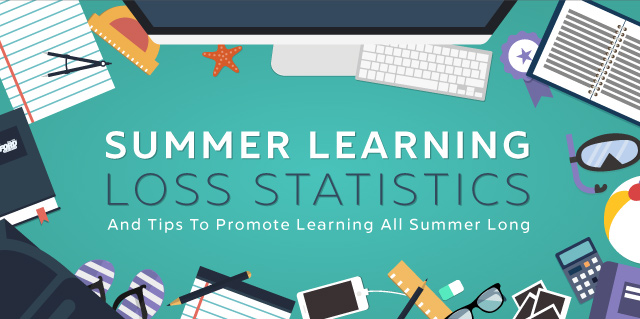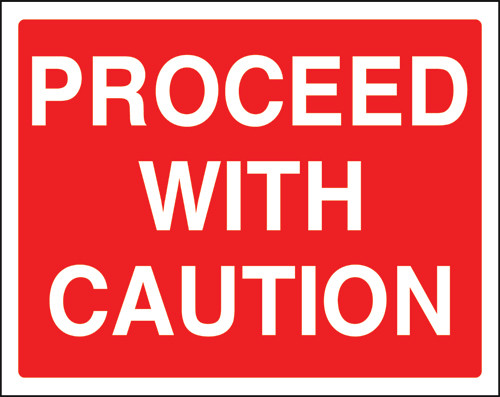 There are many fun yet highly educational therapy activities we can do with our preschool and school-aged clients in the fall. One of my personal favorites is bingo. Boggles World, an online ESL teacher resource actually has a number of ready-made materials, flashcards, and worksheets that can be adapted for speech-language therapy purposes. For example, their Fall and Halloween Bingo comes with both call out cards and a 3×3 and a 4×4 (as well as 3×3) card generator/boards. Clicking the refresh button will generate as many cards as you need, so the supply is endless! You can copy and paste the entire bingo board into a word document resize it and then print it out on reinforced paper or just laminate it. Continue reading Therapy Fun with Ready Made Fall and Halloween Bingo
There are many fun yet highly educational therapy activities we can do with our preschool and school-aged clients in the fall. One of my personal favorites is bingo. Boggles World, an online ESL teacher resource actually has a number of ready-made materials, flashcards, and worksheets that can be adapted for speech-language therapy purposes. For example, their Fall and Halloween Bingo comes with both call out cards and a 3×3 and a 4×4 (as well as 3×3) card generator/boards. Clicking the refresh button will generate as many cards as you need, so the supply is endless! You can copy and paste the entire bingo board into a word document resize it and then print it out on reinforced paper or just laminate it. Continue reading Therapy Fun with Ready Made Fall and Halloween Bingo
Category: preschoolers
Using Picture Books to Teach Children That It’s OK to Make Mistakes and Take Risks
 Those of you who follow my blog know that in my primary job as an SLP working for a psychiatric hospital, I assess and treat language and literacy impaired students with significant emotional and behavioral disturbances. I often do so via the aid of picture books (click HERE for my previous posts on this topic) dealing with a variety of social communication topics. Continue reading Using Picture Books to Teach Children That It’s OK to Make Mistakes and Take Risks
Those of you who follow my blog know that in my primary job as an SLP working for a psychiatric hospital, I assess and treat language and literacy impaired students with significant emotional and behavioral disturbances. I often do so via the aid of picture books (click HERE for my previous posts on this topic) dealing with a variety of social communication topics. Continue reading Using Picture Books to Teach Children That It’s OK to Make Mistakes and Take Risks
Speech, Language, and Literacy Fun with Helen Lester’s Picture Books
 Picture books are absolutely wonderful for both assessment and treatment purposes! They are terrific as narrative elicitation aids for children of various ages, ranging from pre-K through fourth grade. They are amazing treatment aids for addressing a variety of speech, language, and literacy goals that extend far beyond narrative production. Continue reading Speech, Language, and Literacy Fun with Helen Lester’s Picture Books
Picture books are absolutely wonderful for both assessment and treatment purposes! They are terrific as narrative elicitation aids for children of various ages, ranging from pre-K through fourth grade. They are amazing treatment aids for addressing a variety of speech, language, and literacy goals that extend far beyond narrative production. Continue reading Speech, Language, and Literacy Fun with Helen Lester’s Picture Books
Assessing Social Pragmatic Abilities in Children with Language Difficulties
You’ve received a referral to assess the language abilities of a school aged child with suspected language difficulties. The child has not been assessed before so you know you’ll need a comprehensive language test to look at the child’s ability to recall sentences, follow directions, name words, as well as perform a number of other tasks showcasing the child’s abilities in the areas of content and form (Bloom & Lahey, 1978).
But how about the area of language use? Will you be assessing the child’s pragmatic and social cognitive abilities as well during your language assessment? After all most comprehensive standardized assessments, “typically focus on semantics, syntax, morphology, and phonology, as these are the performance areas in which specific skill development can be most objectively measured” (Hill & Coufal, 2005, p 35). Continue reading Assessing Social Pragmatic Abilities in Children with Language Difficulties
FREE Resources for Working with Russian Speaking Clients: Part II
A few years ago I wrote a blog post entitled “Working with Russian-speaking clients: implications for speech-language assessment” the aim of which was to provide some suggestions regarding assessment of bilingual Russian-American birth-school age population in order to assist SLPs with determining whether the assessed child presents with a language difference, insufficient language exposure, or a true language disorder.
Today I wanted to provide Russian speaking clinicians with a few FREE resources pertaining to the typical speech and language development of Russian speaking children 0-7 years of age.
Below materials include several FREE questionnaires regarding Russian language development (words and sentences) of children 0-3 years of age, a parent intake forms for Russian speaking clients, as well as a few relevant charts pertaining to the development of phonology, word formation, lexicon, morphology, syntax, and metalinguistics of children 0-7 years of age.
It is, however, important to note that due to the absence of research and standardized studies on this subject much of the below information still needs to be interpreted with significant caution.
Select Speech and Language Norms:
- Некоторые нормативы речевого развития детей от 18 до 36 месяцев (по материалам МакАртуровского опросника) (Number of words and sentence per age of Russian speakign children based on McArthur Bates)
- Речевой онтогенез: Развитие Речи Ребенка В Норме 0-7 years of age (based on the work of А.Н. Гвоздев) includes: Фонетика,Словообразование, Лексика, Морфолог-ия, Синтаксис, Метаязыковая деятельность (phonology, word formation, lexicon, morphology, syntax, and metalinguistics)
- Развитиe связной речи у детей 3-7 лет
a. Составление рассказа по серии сюжетных картинок
b. Пересказ текста
c. Составление описательного рассказа

Select Parent Questionnaires (McArthur Bates Adapted in Russian):
- Тест речевого и коммуникативного развития детей раннего возраста: слова и жесты (Words and Gestures)
- Тест речевого и коммуникативного развития детей раннего возраста: слова и предложения (Sentences)
- Анкета для родителей (Child Development Questionnaire for Parents)
Материал Для Родителей И Специалистов По Речевым
Нарушениям contains detailed information (27 pages) on Russian child development as well as common communication disrupting disorders
Stay tuned for more resources for Russian speaking SLPs coming shortly.
Related Resources:
- Working with Russian-speaking clients: implications for speech-language assessment
- Assessment of sound and syllable imitation in Russian speaking infants and toddlers
- Russian Articulation Screener
- Language Difference vs. Language Disorder: Assessment & Intervention Strategies for SLPs Working with Bilingual Children
- Impact of Cultural and Linguistic Variables On Speech-Language Services
It’s a Fairy Tale (Well, Almost) Therapy!
 I’ve always loved fairy tales! Much like Audrey Hepburn “If I’m honest I have to tell you I still read fairy-tales and I like them best of all.” Not to compare myself with Einstein (sadly in any way, sigh) but “When I examine myself and my methods of thought, I come to the conclusion that the gift of fantasy has meant more to me than any talent for abstract, positive thinking.”
I’ve always loved fairy tales! Much like Audrey Hepburn “If I’m honest I have to tell you I still read fairy-tales and I like them best of all.” Not to compare myself with Einstein (sadly in any way, sigh) but “When I examine myself and my methods of thought, I come to the conclusion that the gift of fantasy has meant more to me than any talent for abstract, positive thinking.”
It was the very first genre I’ve read when I’ve learned how to read. In fact, I love fairy tales so much that I actually took a course on fairy tales in college (yes they teach that!) and even wrote some of my own (though they were primarily satirical in nature).
So it was a given that I would use fairy tales as a vehicle to teach speech and language goals to the children on my caseload (and I am not talking only preschoolers either). Continue reading It’s a Fairy Tale (Well, Almost) Therapy!
Back to School SLP Efficiency Bundles™
 September is practically here and many speech language pathologists (SLPs) are looking to efficiently prepare for assessing and treating a variety of clients on their caseloads.
September is practically here and many speech language pathologists (SLPs) are looking to efficiently prepare for assessing and treating a variety of clients on their caseloads.
With that in mind, a few years ago I created SLP Efficiency Bundles™, which are materials highly useful for SLPs working with pediatric clients. These materials are organized by areas of focus for efficient and effective screening, assessment, and treatment of speech and language disorders.
A. General Assessment and Treatment Start-Up Bundle contains 5 downloads for general speech language assessment and treatment planning and includes:
- Speech Language Assessment Checklist for a Preschool Child
- Speech Language Assessment Checklist for a School-Aged Child
- Creating a Functional Therapy Plan: Therapy Goals & SOAP Note Documentation
- Selecting Clinical Materials for Pediatric Therapy
- Types and Levels of Cues and Prompts in Speech Language Therapy
B. The Checklists Bundle contains 7 checklists relevant to screening and assessment in speech language pathology
- Speech Language Assessment Checklist for a Preschool Child 3:00-6:11 years of age
- Speech Language Assessment Checklist for a School-Aged Child 7:00-11:11 years of age
- Speech Language Assessment Checklist for Adolescents 12-18 years of age
- Language Processing Deficits (LPD) Checklist for School Aged Children 7:00-11:11 years of age
- Language Processing Deficits (LPD) Checklist for Preschool Children 3:00-6:11 years of age
- Social Pragmatic Deficits Checklist for School Aged Children 7:00-11:11 years of age
- Social Pragmatic Deficits Checklist for Preschool Children 3:00-6:11 years of age
C. Social Pragmatic Assessment and Treatment Bundle contains 6 downloads for social pragmatic assessment and treatment planning (from 18 months through school age) and includes:
- Recognizing the Warning Signs of Social Emotional Difficulties in Language Impaired Toddlers and Preschoolers
- Behavior Management Strategies for Speech Language Pathologists
- Social Pragmatic Deficits Checklist for School Aged Children
- Social Pragmatic Deficits Checklist for Preschool Children
- Assessing Social Pragmatic Skills of School Aged Children
- Treatment of Social Pragmatic Deficits in School Aged Children
D. Multicultural Assessment and Treatment Bundle contains 2 downloads relevant to assessment and treatment of bilingual/multicultural children
- Language Difference vs. Language Disorder: Assessment & Intervention Strategies for SLPs Working with Bilingual Children
- Impact of Cultural and Linguistic Variables On Speech-Language Services
E. Narrative Assessment Bundle contains 3 downloads relevant to narrative assessment
- Narrative Assessments of Preschool and School Aged Children
- Understanding Complex Sentences
- Vocabulary Development: Working with Disadvantaged Populations
F. Fetal Alcohol Spectrum Disorders Assessment and Treatment Bundle contains 3 downloads relevant to FASD assessment and treatment
- Orofacial Observations of At-Risk Children
- Fetal Alcohol Spectrum Disorder: An Overview of Deficits
- Speech Language Assessment and Treatment of Children With Alcohol Related Disorders
G. Psychiatric Disorders Bundle contains 7 downloads relevant to language assessment and treatment in psychiatrically impaired children
- Recognizing the Warning Signs of Social Emotional Difficulties in Language Impaired Toddlers and Preschoolers
- Social Pragmatic Deficits Checklist for School Aged Children
- Social Pragmatic Deficits Checklist for Preschool Children
- Assessing Social Skills in Children with Psychiatric Disturbances
- Improving Social Skills of Children with Psychiatric Disturbances
- Behavior Management Strategies for Speech Language Pathologists
- Differential Diagnosis Of ADHD In Speech Language Pathology
You can find these bundles on SALE in my online store by clicking on the individual bundle links above. You can also purchase these products individually in my online store by clicking HERE.

The Importance of Narrative Assessments in Speech Language Pathology (Revised)
 As SLPs we routinely administer a variety of testing batteries in order to assess our students’ speech-language abilities. Grammar, syntax, vocabulary, and sentence formulation get frequent and thorough attention. But how about narrative production? Does it get its fair share of attention when the clinicians are looking to determine the extent of the child’s language deficits? I was so curious about what the clinicians across the country were doing that in 2013, I created a survey and posted a link to it in several SLP-related FB groups. I wanted to find out how many SLPs were performing narrative assessments, in which settings, and with which populations. From those who were performing these assessments, I wanted to know what type of assessments were they using and how they were recording and documenting their findings. Since the purpose of this survey was non-research based (I wasn’t planning on submitting a research manuscript with my findings), I only analyzed the first 100 responses (the rest were very similar in nature) which came my way, in order to get the general flavor of current trends among clinicians, when it came to narrative assessments. Here’s a brief overview of my [limited] findings. Continue reading The Importance of Narrative Assessments in Speech Language Pathology (Revised)
As SLPs we routinely administer a variety of testing batteries in order to assess our students’ speech-language abilities. Grammar, syntax, vocabulary, and sentence formulation get frequent and thorough attention. But how about narrative production? Does it get its fair share of attention when the clinicians are looking to determine the extent of the child’s language deficits? I was so curious about what the clinicians across the country were doing that in 2013, I created a survey and posted a link to it in several SLP-related FB groups. I wanted to find out how many SLPs were performing narrative assessments, in which settings, and with which populations. From those who were performing these assessments, I wanted to know what type of assessments were they using and how they were recording and documenting their findings. Since the purpose of this survey was non-research based (I wasn’t planning on submitting a research manuscript with my findings), I only analyzed the first 100 responses (the rest were very similar in nature) which came my way, in order to get the general flavor of current trends among clinicians, when it came to narrative assessments. Here’s a brief overview of my [limited] findings. Continue reading The Importance of Narrative Assessments in Speech Language Pathology (Revised)
Phonological Awareness Screening App Review: ProPA
 Summer is in full swing and for many SLPs that means a welcome break from work. However, for me, it’s business as usual, since my program is year around, and we have just started our extended school year program.
Summer is in full swing and for many SLPs that means a welcome break from work. However, for me, it’s business as usual, since my program is year around, and we have just started our extended school year program.
Of course, even my program is a bit light on activities during the summer. There are lots of field trips, creative and imaginative play, as well as less focus on academics as compared to during the school year. However, I’m also highly cognizant of summer learning loss, which is the phenomena characterized by the loss of academic skills and knowledge over the course of summer holidays.

According to Cooper et al, 1996, while generally, typical students lose about one month of learning, there is actually a significant degree of variability of loss based on SES. According to Cooper’s study, low-income students lose approximately two months of achievement. Furthermore, ethnic minorities, twice-exceptional students (2xE), as well as students with language disorders tend to be disproportionately affected (Graham et al, 2011; Kim & Guryan, 2010; Kim, 2004). Finally, it is important to note that according to research, summer loss is particularly prominent in the area of literacy (Graham et al, 2011).
So this summer I have been busy screening the phonological awareness abilities (PA) of an influx of new students (our program enrolls quite a few students during the ESY), as well as rescreening PA abilities of students already on my caseload, who have been receiving services in this area for the past few months.
Why do I intensively focus on phonological awareness (PA)? Because PA is a precursor to emergent reading. It helps children to manipulate sounds in words (see Age of Aquisition of PA Skills). Children need to attain PA mastery (along with a host of a few literacy-related skills) in order to become good readers.
When children exhibit poor PA skills for their age it is a red flag for reading disabilities. Thus it is very important to assess the child’s PA abilities in order to determine their proficiency in this area.
While there are a number of comprehensive tests available in this area, for the purposes of my screening I prefer to use the ProPA app by Smarty Ears.

The Profile of Phonological Awareness (Pro-PA) is an informal phonological awareness screening. According to the developers on average it takes approximately 10 to 20 minutes to administer based on the child’s age and skill levels. In my particular setting (outpatient school based in a psychiatric hospital) it takes approximately 30 minutes to administer to students on the individual basis. It is by no means a comprehensive tool such as the CTOPP-2 or the PAT-2, as there are not enough trials, complexity or PA categories to qualify for a full-blown informal assessment. However, it is a highly useful measure for a quick determination of the students’ strengths and weaknesses with respect to their phonological awareness abilities. Given its current retail price of $29.99 on iTunes, it is a relatively affordable phonological awareness screening option, as the app allows its users to store data, and generates a two-page report at the completion of the screening.
The Pro-PA assesses six different skill areas:
- Rhyming
- Identification
- Production
- Blending
- Syllables
- Sounds
- Sound Isolation
- Initial
- Final
- Medial
- Segmentation
- Words in sentences
- Syllables in words
- Sounds in words
- Words with consonant clusters
- Deletion
- Syllables
- Sounds
- Words with consonant clusters
- Substitution
- Sounds in initial position of words
- Sounds in final position of words
 After the completion of the screening, the app generates a two-page report which describes the students’ abilities as:
After the completion of the screening, the app generates a two-page report which describes the students’ abilities as:
- Achieved (80%+ accuracy)
- Not achieved (0-50% accuracy)
- Emerging (~50-79% accuracy)
The above is perfect for quickly tracking progress or for generating phonological awareness goals to target the students’ phonological awareness weaknesses. While the report can certainly be provided as an attachment to parents and teachers, I usually tend to summarize its findings in my own reports for the purpose of brevity. Below is one example of what that looks like:
 The Profile of Phonological Awareness (Pro-PA), an informal phonological awareness screening was administered to “Justine” in May 2017 to further determine the extent of her phonological awareness strengths and weaknesses.
The Profile of Phonological Awareness (Pro-PA), an informal phonological awareness screening was administered to “Justine” in May 2017 to further determine the extent of her phonological awareness strengths and weaknesses.
On the Pro-PA, “Justine” evidenced strengths (80-100% accuracy) in the areas of rhyme identification, initial and final sound isolation in words, syllable segmentation, as well as substitution of sounds in initial position in words.
She also evidenced emerging abilities (~60-66% accuracy) in the areas of syllable and sound blending in words, as well as sound segmentation in CVC words,
However, Pro-PA assessment also revealed weaknesses (inability to perform) in the areas of: rhyme production, isolation of medial sounds in words, segmentation of words, segmentation of sounds in words with consonant blends,deletion of first sounds, consonant clusters, as well as substitution of sounds in final position in words. Continuation of therapeutic intervention is recommended in order to improve “Justine’s” abilities in these phonological awareness areas.
Now you know how I quickly screen and rescreen my students’ phonological awareness abilities, I’d love to hear from you! What screening instruments are you using (free or paid) to assess your students’ phonological awareness abilities? Do you feel that they are more or less comprehensive/convenient than ProPA?
References:
- Cooper, H., Nye, B., Charlton, K., Lindsay, J., & Greathouse, S. (1996). “The effects of summer vacation on achievement test scores: A narrative and meta analytic review.” Review of Educational Research, 66, 227–268.
- Graham, A., McNamara, J. K., & Van Lankveld, J. (2011). Closing the summer learning gap for vulnerable learners: An exploratory study of a summer literacy programme for kindergarten children at-risk for reading difficulties. Early Child Development and Care, 181, 575–585.
- Kim, J. S. (2004). Summer reading and the ethnic achievement gap. Journal of Education for Students Placed
at Risk, 9, 169–188. - Kim, J.,S. & Guryan, J. (2010). The efficacy of a voluntary summer book reading intervention for low-income Latino children from language minority families. Journal of
Educational Psychology, 102(1), 20-31
What Research Shows About the Functional Relevance of Standardized Language Tests
 As an SLP who routinely conducts speech and language assessments in several settings (e.g., school and private practice), I understand the utility of and the need for standardized speech, language, and literacy tests. However, as an SLP who works with children with dramatically varying degree of cognition, abilities, and skill-sets, I also highly value supplementing these standardized tests with functional and dynamic assessments, interactions, and observations.
As an SLP who routinely conducts speech and language assessments in several settings (e.g., school and private practice), I understand the utility of and the need for standardized speech, language, and literacy tests. However, as an SLP who works with children with dramatically varying degree of cognition, abilities, and skill-sets, I also highly value supplementing these standardized tests with functional and dynamic assessments, interactions, and observations.
 Since a significant value is placed on standardized testing by both schools and insurance companies for the purposes of service provision and reimbursement, I wanted to summarize in today’s post the findings of recent articles on this topic. Since my primary interest lies in assessing and treating school-age children, for the purposes of today’s post all of the reviewed articles came directly from the Language Speech and Hearing Services in Schools (LSHSS) journal.
Since a significant value is placed on standardized testing by both schools and insurance companies for the purposes of service provision and reimbursement, I wanted to summarize in today’s post the findings of recent articles on this topic. Since my primary interest lies in assessing and treating school-age children, for the purposes of today’s post all of the reviewed articles came directly from the Language Speech and Hearing Services in Schools (LSHSS) journal.
We’ve all been there. We’ve all had situations in which students scored on the low end of normal, or had a few subtest scores in the below average range, which equaled an average total score. We’ve all poured over eligibility requirements trying to figure out whether the student should receive therapy services given the stringent standardized testing criteria in some states/districts.
Of course, as it turns out, the answer is never simple. In 2006, Spaulding, Plante & Farinella set out to examine the assumption: “that children with language impairment will receive low scores on standardized tests, and therefore [those] low scores will accurately identify these children” (61). So they analyzed the data from 43 commercially available child language tests to identify whether evidence exists to support their use in identifying language impairment in children.
 Turns out it did not! Turns out due to the variation in psychometric properties of various tests (see article for specific details), many children with language impairment are overlooked by standardized tests by receiving scores within the average range or not receiving low enough scores to qualify for services. Thus, “the clinical consequence is that a child who truly has a language impairment has a roughly equal chance of being correctly or incorrectly identified, depending on the test that he or she is given.” Furthermore, “even if a child is diagnosed accurately as language impaired at one point in time, future diagnoses may lead to the false perception that the child has recovered, depending on the test(s) that he or she has been given (69).”
Turns out it did not! Turns out due to the variation in psychometric properties of various tests (see article for specific details), many children with language impairment are overlooked by standardized tests by receiving scores within the average range or not receiving low enough scores to qualify for services. Thus, “the clinical consequence is that a child who truly has a language impairment has a roughly equal chance of being correctly or incorrectly identified, depending on the test that he or she is given.” Furthermore, “even if a child is diagnosed accurately as language impaired at one point in time, future diagnoses may lead to the false perception that the child has recovered, depending on the test(s) that he or she has been given (69).”
Consequently, they created a decision tree (see below) with recommendations for clinicians using standardized testing. They recommend using alternate sources of data (sensitivity and specificity rates) to support accurate identification (available for a small subset of select tests).

The idea behind it is: “if sensitivity and specificity data are strong, and these data were derived from subjects who are comparable to the child tested, then the clinician can be relatively confident in relying on the test score data to aid his or her diagnostic decision. However, if the data are weak, then more caution is warranted and other sources of information on the child’s status might have primacy in making a diagnosis (70).”
Fast forward 6 years, and a number of newly revised tests later, in 2012, Spaulding and colleagues set out to “identify various U.S. state education departments’ criteria for determining the severity of language impairment in children, with particular focus on the use of norm-referenced tests” as well as to “determine if norm-referenced tests of child language were developed for the purpose of identifying the severity of children’s language impairment” (176).
They obtained published procedures for severity determinations from available U.S. state education departments, which specified the use of norm-referenced tests, and reviewed the manuals for 45 norm-referenced tests of child language to determine if each test was designed to identify the degree of a child’s language impairment.
What they found out was “the degree of use and cutoff-point criteria for severity determination varied across states. No cutoff-point criteria aligned with the severity cutoff points described within the test manuals. Furthermore, tests that included severity information lacked empirical data on how the severity categories were derived (176).”
 Thus they urged SLPs to exercise caution in determining the severity of children’s language impairment via norm-referenced test performance “given the inconsistency in guidelines and lack of empirical data within test manuals to support this use (176)”.
Thus they urged SLPs to exercise caution in determining the severity of children’s language impairment via norm-referenced test performance “given the inconsistency in guidelines and lack of empirical data within test manuals to support this use (176)”.
Following the publication of this article, Ireland, Hall-Mills & Millikin issued a response to the Spaulding and colleagues article. They pointed out that the “severity of language impairment is only one piece of information considered by a team for the determination of eligibility for special education and related services”. They noted that they left out a host of federal and state guideline requirements and “did not provide an analysis of the regulations governing special education evaluation and criteria for determining eligibility (320).” They pointed out that “IDEA prohibits the use of ‘any single measure or assessment as the sole criterion’ for determination of disability and requires that IEP teams ‘draw upon information from a variety of sources.”
They listed a variety of examples from several different state departments of education (FL, NC, VA, etc.), which mandate the use of functional assessments, dynamic assessments criterion-referenced assessments, etc. for their determination of language therapy eligibility.
 But are the SLPs from across the country appropriately using the federal and state guidelines in order to determine eligibility? While one should certainly hope so, it does not always seem to be the case. To illustrate, in 2012, Betz & colleagues asked 364 SLPs to complete a survey “regarding how frequently they used specific standardized tests when diagnosing suspected specific language impairment (SLI) (133).”
But are the SLPs from across the country appropriately using the federal and state guidelines in order to determine eligibility? While one should certainly hope so, it does not always seem to be the case. To illustrate, in 2012, Betz & colleagues asked 364 SLPs to complete a survey “regarding how frequently they used specific standardized tests when diagnosing suspected specific language impairment (SLI) (133).”
Their purpose was to determine “whether the quality of standardized tests, as measured by the test’s psychometric properties, is related to how frequently the tests are used in clinical practice” (133).
What they found out was that the most frequently used tests were the comprehensive assessments including the Clinical Evaluation of Language Fundamentals and the Preschool Language Scale as well as one word vocabulary tests such as the Peabody Picture Vocabulary Test. Furthermore, the date of publication seemed to be the only factor which affected the frequency of test selection.
They also found out that frequently SLPs did not follow up the comprehensive standardized testing with domain specific assessments (critical thinking, social communication, etc.) but instead used the vocabulary testing as a second measure. They were understandably puzzled by that finding. “The emphasis placed on vocabulary measures is intriguing because although vocabulary is often a weakness in children with SLI (e.g., Stothard et al., 1998), the research to date does not show vocabulary to be more impaired than other language domains in children with SLI (140).“
According to the authors, “perhaps the most discouraging finding of this study was the lack of a correlation between frequency of test use and test accuracy, measured both in terms of sensitivity/specificity and mean difference scores (141).”
If since the time (2012) SLPs have not significantly change their practices, the above is certainly disheartening, as it implies that rather than being true diagnosticians, SLPs are using whatever is at hand that has been purchased by their department to indiscriminately assess students with suspected speech language disorders. If that is truly the case, it certainly places into question the Ireland, Hall-Mills & Millikin’s response to Spaulding and colleagues. In other words, though SLPs are aware that they need to comply with state and federal regulations when it comes to unbiased and targeted assessments of children with suspected language disorders, they may not actually be using appropriate standardized testing much less supplementary informal assessments (e.g., dynamic, narrative, language sampling) in order to administer well-rounded assessments.
 So where do we go from here? Well, it’s quite simple really! We already know what the problem is. Based on the above articles we know that:
So where do we go from here? Well, it’s quite simple really! We already know what the problem is. Based on the above articles we know that:
- Standardized tests possess significant limitations
- They are not used with optimal effectiveness by many SLPs
- They may not be frequently supplemented by relevant and targeted informal assessment measures in order to improve the accuracy of disorder determination and subsequent therapy eligibility
Now that we have identified a problem, we need to develop and consistently implement effective practices to ameliorate it. These include researching psychometric properties of tests to review sample size, sensitivity and specificity, etc, use domain specific assessments to supplement administration of comprehensive testing, as well as supplement standardized testing with a plethora of functional assessments.
SLPs can review testing manuals and consult with colleagues when they feel that the standardized testing is underidentifying students with language impairments (e.g., HERE and HERE). They can utilize referral checklists (e.g., HERE) in order to pinpoint the students’ most significant difficulties. Finally, they can develop and consistently implement informal assessment practices (e.g., HERE and HERE) during testing in order to gain a better grasp on their students’ TRUE linguistic functioning.
Stay tuned for the second portion of this post entitled: “What Research Shows About the Functional Relevance of Standardized Speech Tests?” to find out the best practices in the assessment of speech sound disorders in children.
References:
- Spaulding, Plante & Farinella (2006) Eligibility Criteria for Language Impairment: Is the Low End of Normal Always Appropriate?
- Spaulding, Szulga, & Figueria (2012) Using Norm-Referenced Tests to Determine Severity of Language Impairment in Children: Disconnect Between U.S. Policy Makers and Test Developers
- Ireland, Hall-Mills & Millikin (2012) Appropriate Implementation of Severity Ratings, Regulations, and State Guidance: A Response to “Using Norm-Referenced Tests to Determine Severity of Language Impairment in Children: Disconnect Between U.S. Policy Makers and Test Developers” by Spaulding, Szulga, & Figueria (2012)
- Betz et al. (2013) Factors Influencing the Selection of Standardized Tests for the Diagnosis of Specific Language Impairment